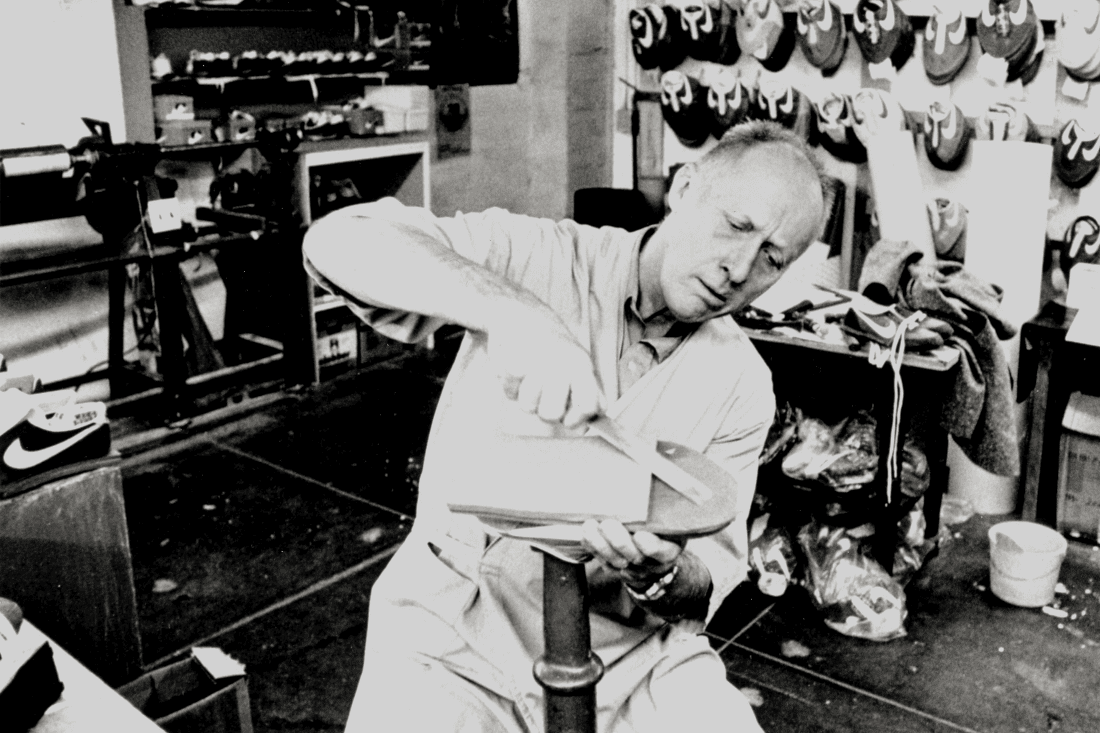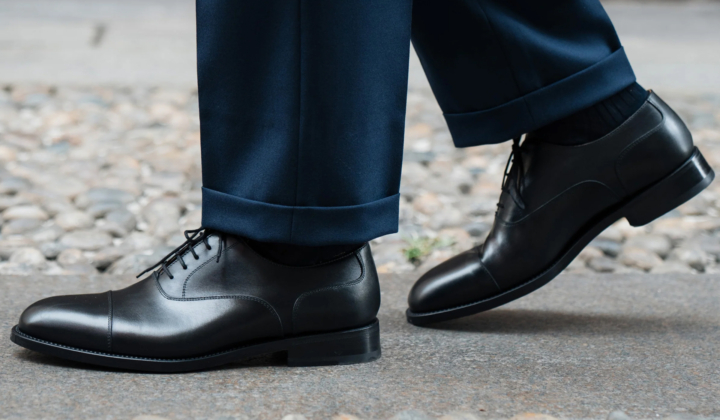NIKE’S ORIGINAL INNOVATOR
“A shoe must be three things, It must be light, comfortable and it’s got to go the distance.” -Nike co-founder Bill Bowerman
Bill Bowerman’s drive and relentless curiosity has lead to a string of unique accomplishments: the most memorable being his redefining of athletic footwear. In his quest to diminish the reign of weighty leather and metal running spikes, his dedication to create a shoe to better serve the runners motivated him in shaving ounces off shoes to help runners slash seconds off their times.
Writing to several footwear companies throughout the 1950’s, proposing ideas for improving shoes, none of which they were willing to accept. Bowerman, with toughened determination and the guidance of a local cobbler, learned how to make shoes, and began to create his ideas himself.
Phil Knight, co-founder of Blue Ribbon Sports, the precursor to Nike, in 1964, became the first student-athlete to try a Bowerman original at practice one evening. It was here, teammate Otis Davis noticed the prototype and asked to give them a try. He liked the shoes so much he didn’t give them back. In fact, Davis went on to win a conference championship and a gold medal in the 400 meters at the 1960 Olympic Games – In Bowerman made shoes.
However, Bowerman’s own footwear innovations proved even more influential, shaping Nike’s ethos of leveraging athlete insights to design transformative products.
Bowerman’s first breakthrough surfaced the following spring, in 1965, the indirect result of a track meet. Future Olympic marathoner Kenny Moore moved into the path of a passing teammate, the misstep resulted in a spike-inflicted gash on the outside of his foot. That injury led to a stress fracture – and one of Bowerman’s most enduring inventions.
The runner trained in the Onitsuka Tiger TG-22, a high-jump shoe Blue Ribbon Sports mistakenly sold as a running shoe. Moore’s X-ray showed a break across the third metatarsal, Bowerman asked to see the shoes he had trained in and promptly proceeded to rip them apart.
Setting out to redesign and correct the TG-22, Bowerman fashioned a running shoe with a cushiony innersole, soft sponge rubber in the forefoot and top of the heel, hard sponge rubber in the middle of the heel and a firm rubber outsole.
Consequently, Onitsuka introduced the Bowerman-engineered Tiger Cortez, described as: The finest long distance shoe in the world. Soft sponge midsole through ball and heel absorbs road shock; high-density outer sole for extra miles of wear.
The Cortez was the first stable, comfortable shoe for the roads, consumers loved it.
Knight and Bowerman then ceased importing and distributing running shoes through Blue Ribbon Sports and together launched Nike: a designer and maker of athletic sports shoes.
However this was not enough, Bowerman then repositioned his focus to create a shoe with impeccable traction on multiple surfaces, without the metal spikes. Introducing: The waffle sole shoes. Iconically the initial design was discovered over the breakfast table.
Blue Ribbon Sports crew raced to debut the waffle sole at the upcoming 1972 U.S. Runners liked the feel and traction of the waffle sole leading to the word of the invention being quickly spread. Further refined the concept, Bowerman finally developed the iconic Waffle Trainer in 1974.
Bowerman’s legacy as an original thinker and innovator will forever be linked with the waffle sole, which like many brilliant inventions is so simple and intuitive it resonates immediately and broadly.
Nike’s footwear ideal has evolved, but Bowerman’s motivation and dedication to creating products that enable athletes performances continues to fuel Nike’s culture of innovation.







